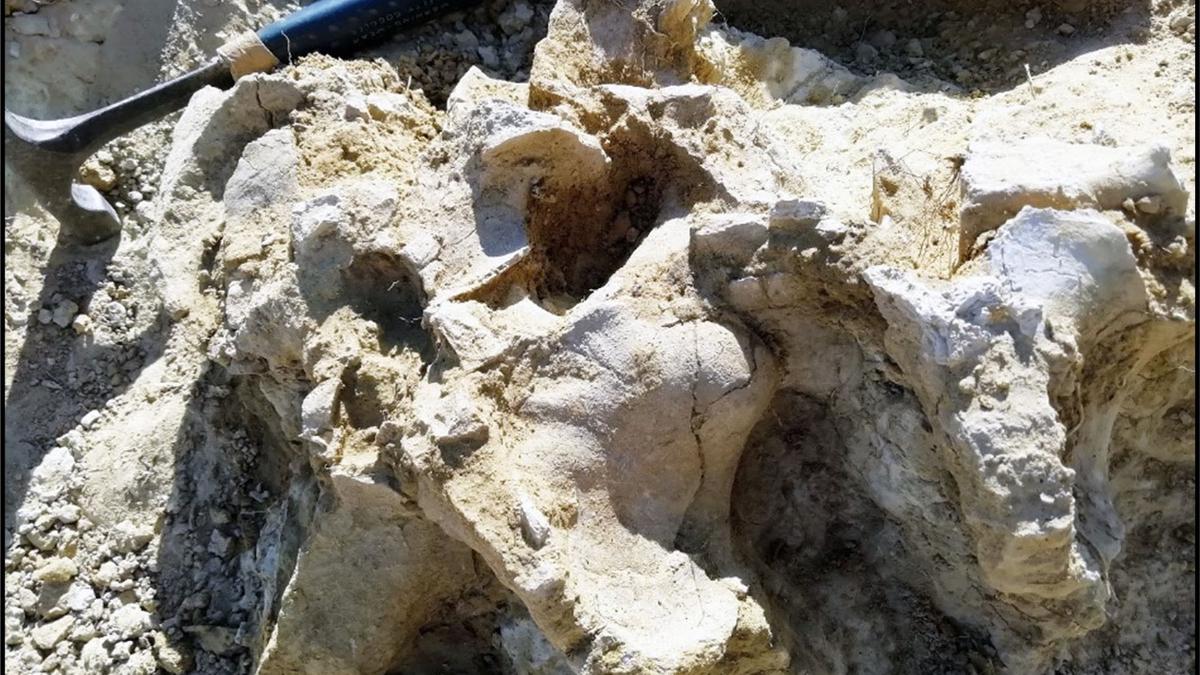
Oldest yet fossils of a plant-eating dinosaur found in Rajasthan Premium
The Hindu
In a paper published recently in Scientific Reports, scientists from IIT Roorkee have characterised dinosaur fossils from the middle-Jurassic period, found in the Thar desert near the Jaisalmer Basin by the Geological Survey of India. They discovered that they had uncovered remains of a sauropod dinosaur, which is the same clade as the long-necked herbivores in Jurassic Park – only these happened to be the oldest known fossils of this particular kind of sauropod.
In a paper published recently in Scientific Reports, scientists from IIT Roorkee have characterised dinosaur fossils from the Middle Jurassic period, found in the Thar desert near the Jaisalmer Basin by the Geological Survey of India. They discovered that they had uncovered remains of a sauropod dinosaur, which is the same clade as the long-necked herbivores in Jurassic Park – only these happened to be the oldest known fossils of this particular kind of sauropod.
Belonging to the family Dicraeosauridae and from the superfamily Diplodocoidea, these fossils are the first dicraeosaurid sauropods to have been found in India. And at 167 million years old, they are the oldest known diplodocoid fossils in the world. The scientists named the dinosaur Tharosaurus indicus, with Tharo deriving from the Thar desert; saurus from the Greek ‘sauros’, or lizard; and indicus from its Indian origin. The fossils were found by Triparna Ghosh, Pragya Pandey, and Krishna Kumar from the Geological Survey of India.
“The most fascinating feature about sauropods is their size,” said Debajit Datta, a postdoctoral researcher in Sunil Bajpai’s group at IIT Roorkee and one of the lead authors of the paper. “They can grow more than a hundred feet. There are many sauropod groups that are even longer than the blue whale.”
However, members of the Dicraeosauridae family of sauropods – to which Tharasaurus belongs – were not nearly as large. This family was unique: its members were smaller and had shorter necks and tails compared to the other long-necked sauropods.
Sauropods first appeared on the earth during the Jurassic period, about 200 million years ago. They were one of the most dominant clades of dinosaurs, surviving until the late Cretaceous period 65 million years ago, when the dinosaurs went extinct.
But strangely, in India, while sauropod fossils from the Early Jurassic and the Late Cretaceous period have been found, very few have from the Middle or Late Jurassic period, which would be about 160-180 million years ago.
“The Middle Jurassic remains somewhat of an enigma,” said Advait Jukar, a palaeontologist at the University of Arizona. “Part of the reason is that we don’t have as many exposed rocks from this time period. We also haven’t put in a lot of effort into exploring these rocks in places where they are exposed, like in India.”











